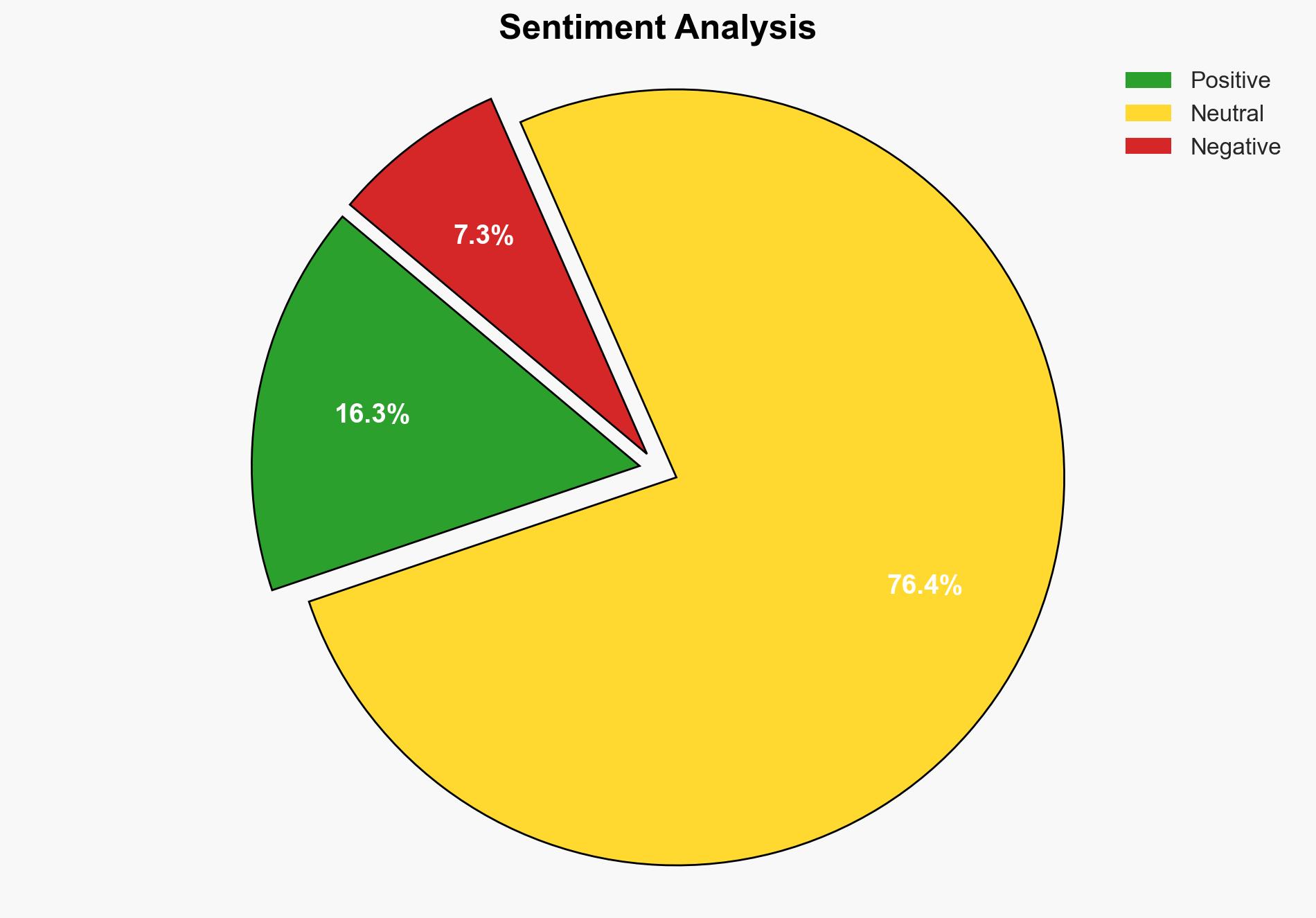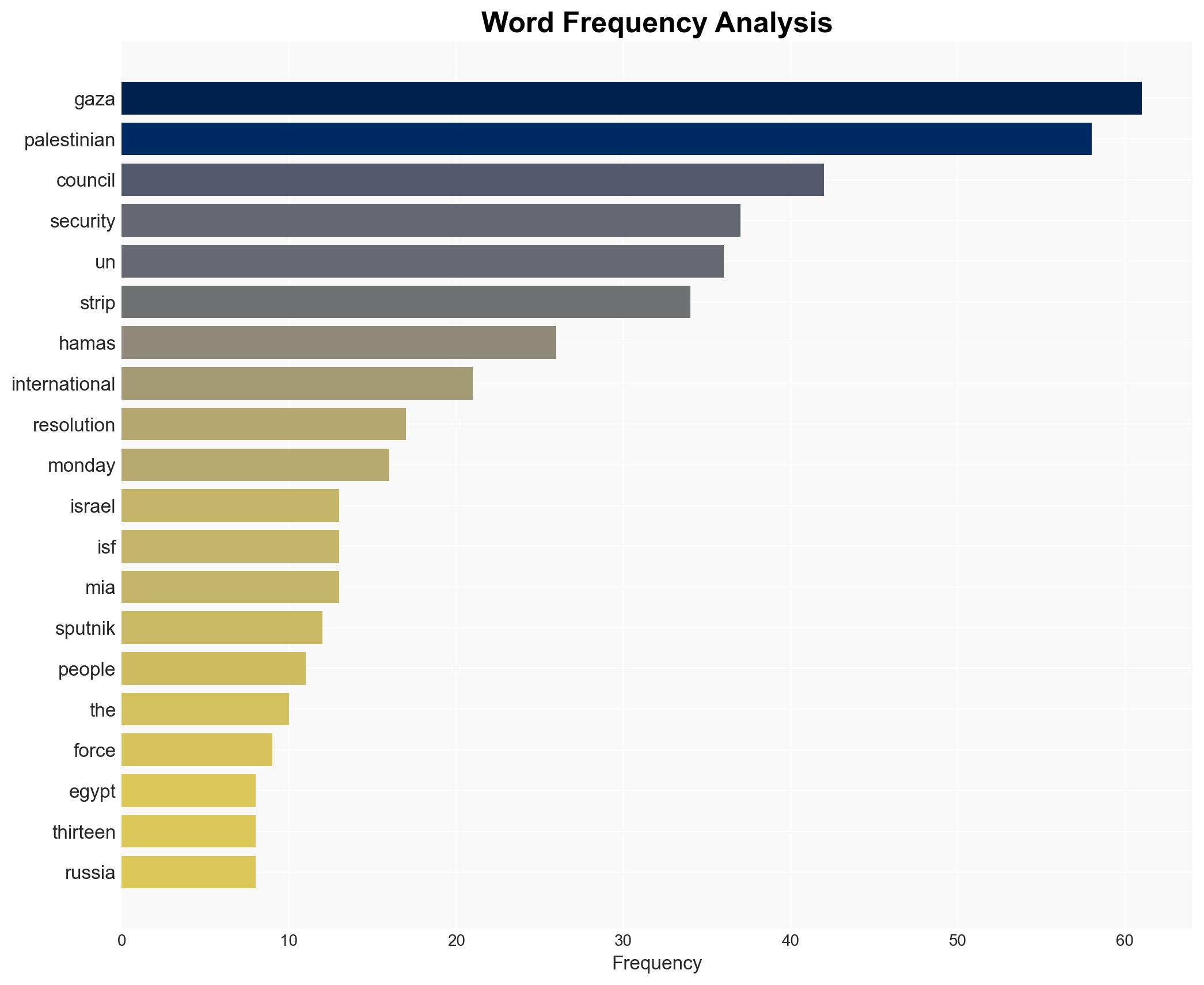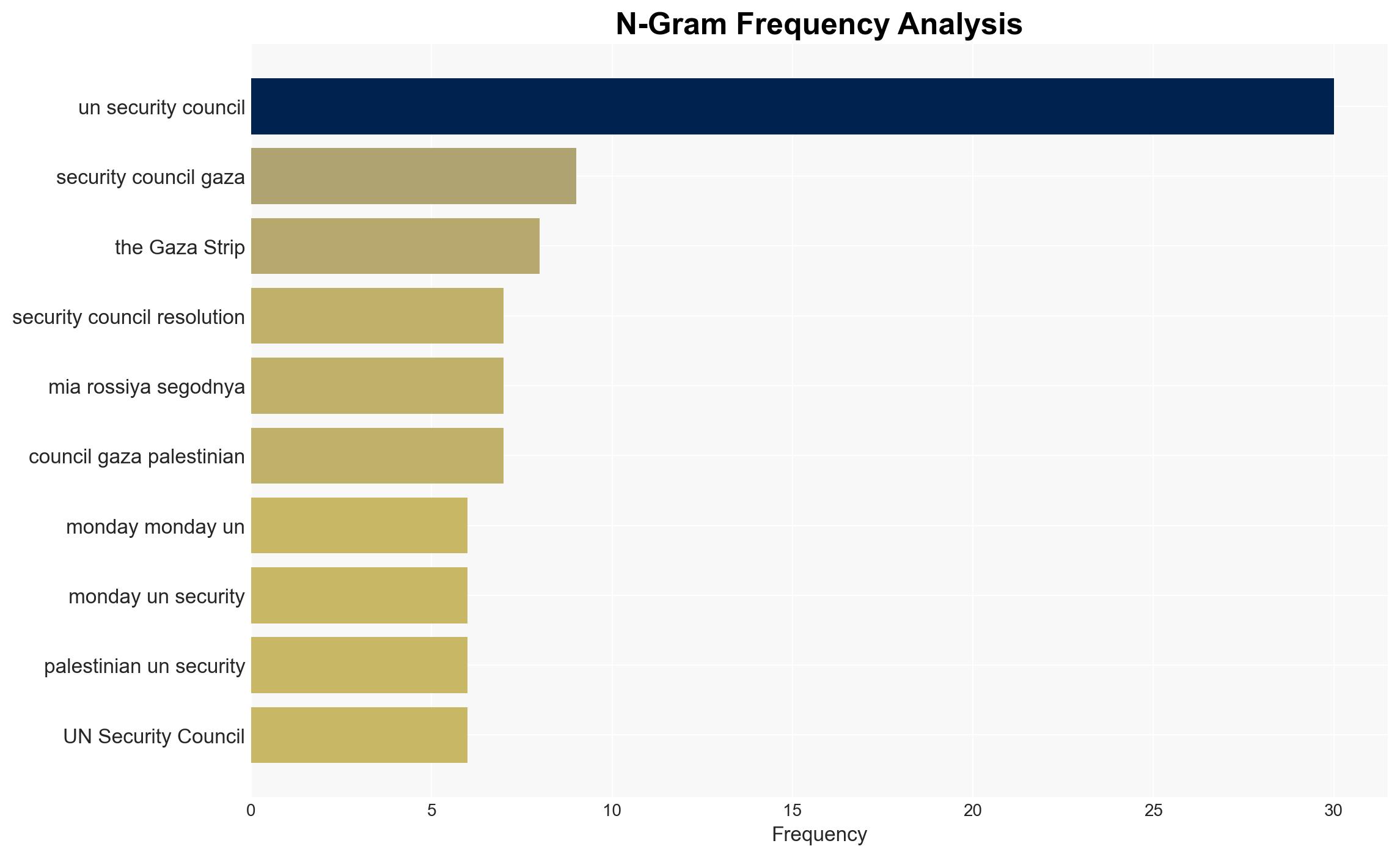UN Security Council Resolution on Gaza Does Not Meet Demands of Palestinian People – Hamas – Sputnikglobe.com
Published on: 2025-11-18
AI-powered OSINT brief from verified open sources. Automated NLP signal extraction with human verification. See our Methodology and Why WorldWideWatchers.
Intelligence Report: UN Security Council Resolution on Gaza
1. BLUF (Bottom Line Up Front)
The UN Security Council’s resolution to establish an International Stabilisation Force (ISF) in Gaza, while intended to stabilize the region, is unlikely to meet the demands of the Palestinian people as articulated by Hamas. The most supported hypothesis is that the resolution will face significant resistance from Palestinian factions, potentially leading to increased tensions and undermining its effectiveness. Confidence Level: Moderate. Recommended action includes diplomatic engagement with key stakeholders to address grievances and enhance the resolution’s acceptance and implementation.
2. Competing Hypotheses
Hypothesis 1: The UN resolution will stabilize Gaza by securing borders, protecting civilians, and facilitating humanitarian aid, leading to long-term peace and security.
Hypothesis 2: The resolution will exacerbate tensions as it does not address core Palestinian demands, leading to increased resistance from Hamas and other factions, undermining its effectiveness.
Hypothesis 2 is more likely due to the immediate rejection by Hamas and the abstention of key UNSC members Russia and China, indicating limited international consensus and support.
3. Key Assumptions and Red Flags
Assumptions: The ISF can operate effectively with cooperation from Israel and Egypt. The resolution’s humanitarian and security measures will be perceived as neutral.
Red Flags: Hamas’s outright rejection, potential for misinformation campaigns, and lack of support from major international players like Russia and China.
4. Implications and Strategic Risks
The resolution’s failure to meet Palestinian demands could lead to increased political instability and violence in Gaza. It may also strain international relations, particularly among UNSC members, and could trigger cyber or informational warfare tactics by opposing factions. Economic impacts may arise from disrupted aid and trade flows.
5. Recommendations and Outlook
- Engage in multilateral diplomacy to address Palestinian grievances and modify the resolution to enhance acceptance.
- Monitor for misinformation and cyber threats to counteract destabilizing narratives.
- Best Scenario: Successful implementation of ISF leads to reduced violence and improved humanitarian conditions.
- Worst Scenario: Increased violence and international diplomatic fallout, leading to broader regional instability.
- Most-likely Scenario: Partial implementation with ongoing resistance, requiring continuous diplomatic efforts.
6. Key Individuals and Entities
Hamas: Palestinian faction rejecting the resolution.
UN Security Council: International body responsible for the resolution.
Russia and China: UNSC members abstaining from the vote, indicating potential geopolitical rifts.
7. Thematic Tags
Regional Focus, Middle East, International Relations, Conflict Resolution, Humanitarian Aid
Structured Analytic Techniques Applied
- Causal Layered Analysis (CLA): Analyze events across surface happenings, systems, worldviews, and myths.
- Cross-Impact Simulation: Model ripple effects across neighboring states, conflicts, or economic dependencies.
- Scenario Generation: Explore divergent futures under varying assumptions to identify plausible paths.
Explore more:
Regional Focus Briefs ·
Daily Summary ·
Support us





